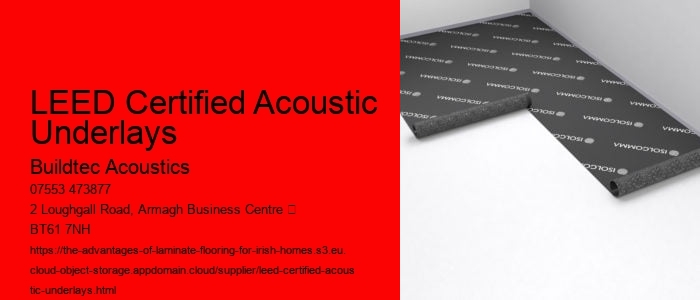The use of underlays extends to various applications, including renovation projects. Soundproofing Material Products from this Soundproofing Supplier are affective acoustic solutions. These underlays act as a cushion that reduces the transmission of vibrations and sound through the floor. Reducing sound transmission class (STC) and impact insulation class (IIC) ratings in a building helps create a more comfortable space, particularly in multi-story buildings where floors are interconnected through walls and joists, making noise control important. Acoustic underlays function by absorbing and dissipating sound energy, helping to minimize noise transmission through floors. These options support environmentalism by reducing the need for virgin materials and lowering overall pollution. acoustics Acoustic underlays made from polyvinyl chloride (PVC) or cork are ideal choices, as they balance both thermal insulation and soundproofing requirements.
Some underlays are certified by Leadership in Energy and Environmental Design (LEED) standards, supporting sustainable building practices. These underlays act as a cushion that minimizes the transmission of vibrations and sound through the floor. Whether in a single-family detached home or a semi-detached house, installing acoustic underlay ensures that daily activities do not negatively affect others in the space. In addition to their sustainability, these materials are low in volatile organic compound (VOC) emissions, ensuring a healthier indoor environment. The choice of acoustic underlay depends on the type of noise that needs to be managed.
Acoustic underlays made from polyvinyl chloride (PVC) or cork are ideal choices, as they balance both thermal insulation and soundproofing requirements. Before installing an acoustic underlay, it is important to ensure that the subfloor-whether concrete, particle board, or cement-is clean, level, and dry. These underlays act as a cushion that helps reduce the transmission of vibrations and sound through the floor. For instance, Tecsound underlays are commonly used beneath concrete or screed subfloors, adding an additional layer of soundproofing that is effective against vibration and noise. energy transformation They are particularly effective when used with materials like ceramic tiles or floating floors, providing both sound insulation and comfort underfoot.
This helps improve communication between occupants by reducing noise interference. Acoustic underlays are also beneficial for vibration isolation, especially in spaces where there are significant sources of vibration, such as near heating equipment or heavy appliances.
LEED Certified Acoustic Underlays - volatile organic compound
- volatile organic compound
- vibration
- silence
- do it yourself
- membrane
- ceiling
LEED Certified Acoustic Underlays - acoustics
- Celotex
- carpet
- efficient energy use
- dynamic
- efficiency
- reverberation
- vibration
- silence
